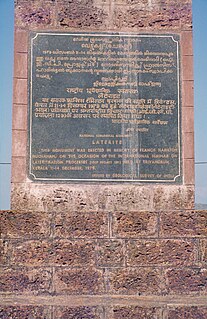 W
WRegolith is a blanket of unconsolidated, loose, heterogeneous superficial deposits covering solid rock. It includes dust, broken rocks, and other related materials and is present on Earth, the Moon, Mars, some asteroids, and other terrestrial planets and moons.
 W
WBauxite is a sedimentary rock with a relatively high aluminium content. It is the world's main source of aluminium and gallium. Bauxite consists mostly of the aluminium minerals gibbsite (Al(OH)3), boehmite (γ-AlO(OH)) and diaspore (α-AlO(OH)), mixed with the two iron oxides goethite (FeO(OH)) and haematite (Fe2O3), the aluminium clay mineral kaolinite (Al2Si2O5(OH)) and small amounts of anatase (TiO2) and ilmenite (FeTiO3 or FeO.TiO2).
 W
WGrus is an accumulation of angular, coarse-grained fragments resulting from the granular disintegration by the processes of chemical and mechanical weathering of crystalline rocks generally in an arid or semiarid region. Grus sand, when cemented into a sandstone, will form an arkose.
 W
WLaterite is both a soil and a rock type rich in iron and aluminium and is commonly considered to have formed in hot and wet tropical areas. Nearly all laterites are of rusty-red coloration, because of high iron oxide content. They develop by intensive and prolonged weathering of the underlying parent rock. Tropical weathering (laterization) is a prolonged process of chemical weathering which produces a wide variety in the thickness, grade, chemistry and ore mineralogy of the resulting soils. The majority of the land area containing laterites is between the tropics of Cancer and Capricorn.
 W
WLunar soil is the fine fraction of the regolith found on the surface of the Moon. Its properties can differ significantly from those of terrestrial soil. The physical properties of lunar soil are primarily the result of mechanical disintegration of basaltic and anorthositic rock, caused by continual meteoric impacts and bombardment by solar and interstellar charged atomic particles over years. The process is largely one of mechanical weathering in which the particles are ground to finer and finer size over time. This situation contrasts fundamentally to terrestrial soil formation, mediated by the presence of molecular oxygen (O2), humidity, atmospheric wind, and a robust array of contributing biological processes. Some have argued that the term soil is not correct in reference to the Moon because on Earth, soil is defined as having organic content, whereas the Moon has none. However, standard usage among lunar scientists ignores that distinction.
 W
WMartian soil is the fine regolith found on the surface of Mars. Its properties can differ significantly from those of terrestrial soil, including its toxicity due to the presence of perchlorates. The term Martian soil typically refers to the finer fraction of regolith. So far, no samples have been returned to Earth, the goal of a Mars sample-return mission, but the soil has been studied remotely with the use of Mars rovers and Mars orbiters.
 W
WSaprolite is a chemically weathered rock. Saprolites form in the lower zones of soil profiles and represent deep weathering of the bedrock surface. In most outcrops its color comes from ferric compounds. Deeply weathered profiles are widespread on the continental landmasses between latitudes 35°N and 35°S.
 W
WA stone stripe, also called a lava stringer, is an elongated concentration of mostly talus-like basalt rock found along a hillside or the base of a cliff. Many stringers occur without cliffs. A stringer is identified by its lack of vegetative cover. They typically occur in north central Oregon and develop at 900 to 1,100 meter elevations. Lengths can range from only a few meters to over 150 meters, and widths measure from .3 to 3 meters. Depths of the stringers range from 20-65 centimeters.